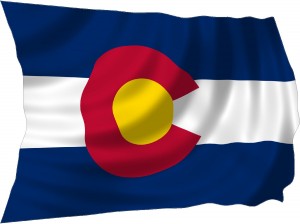The United States has had a love-hate relationship with Cannabis, the genus encompassing both hemp and marijuana.
In 1937, Congress passed the Marihuana Tax Act, which effectively began hemp prohibition, as the tax and licensing regulations made cultivation difficult. The bombing of Pearl Harbor in World War II, however, was a game-changer. It cut off foreign hemp from the Philippines, so the federal government subsidized and encouraged hemp cultivation, leading farmers to grow more than 1 million acres. After the war ended, the government quietly shut down all hemp processing plants, and the industry faded away again. And in 1970, the country severed ties with the crop by categorizing all cannabis as a Schedule I substance per the Controlled Substances Act, freezing any cultivation, processing facilities and consumer sales.
Today, although it’s illegal at the federal level, small steps are being taken toward legalization of industrial hemp farming in the U.S.
“What if we just woke up one day and corn was outlawed?” asks Eric Hunter, president of the Rocky Mountain Hemp Association. “Imagine if 80 years down the road corn was illegal. There go chips, corn syrup, plastic cups. Hemp is just as harmless as corn — why should it be illegal?”
Earlier this year, Colorado and Kentucky regulated legal hemp cultivation as part of the Farm Bill, allowing growers to register farmland dedicated to the crop, which can be developed into products ranging from cloth to paper to foods and oils. As of August, Colorado had 55 commercial registrants with 1,461 acres, and 73 research and development registrants with 237 acres.
Despite the number of acres and individuals registered, many fields are void of the crop due to seed accessibility issues. Of the 1,698 registered Colorado acres dedicated to cultivating hemp, 300 belong to Ryan Loflin’s farm in Springfield.
“Unfortunately, I’ve only been able to plant a little over six acres,” he says. “I wasn’t able to get seed — it got held up at Customs.”
Loflin joins several registered farmers facing barriers during the inaugural year of hemp farming in Colorado.
Ron Carleton, deputy commissioner for the Colorado Department of Agriculture, explains this is due, in part, to regulation inconsistencies. In addition to the Farm Bill at the federal level, the passage of Amendment 64 in Colorado legalized the cultivation, processing and sale of industrial hemp and allowed farmers to register with the state either as commercial growers or research-and-development growers.
“There are difficulties getting seeds because industrial hemp has essentially been illegal since the 1950s,” Carleton says. “The only seed they can get is from other countries because of the conflict with state versus federal law. Hemp and marijuana are considered to be one in the same, and seeds cannot be imported without an import permit from the [Drug Enforcement Agency]. And they’re not issuing any.”
Hunter says another hurdle lies with seed breeders refusing to export seeds.
“Because it’s illegal, there’s no patent protection; they would have to be registered as part of the national seed database,” he says. “Until that happens, there’s really nothing to do.”
If farmers are lucky enough to get seeds, it’s not cheap. Loflin estimates that seeds are being sold from Europe at $4 to $5 per pound. Last year he imported about 1,500 pounds of hemp seeds from Europe to plant 300 acres. The six acres he planted this year came from seeds he harvested last year.
“This year, I tried to do it completely legitimately through the Farm Bill,” he says. “I want to focus on seed production and establish good, climatized seed genetics. We’re not sure what the policy will be next year, and getting seeds could be a problem again.”
Even if seeds are acquired and planted, farmers gamble with the potential potency. Under Farm Bill regulation, the Department of Agriculture reserves the right to test the crops to ensure the THC level is below 0.3 percent. If a crop tests higher, the farmer cannot harvest the hemp and may be required to destroy it.
“I think if they raised the level to 1 percent, that would give every farmer peace of mind,” Loflin says. “It costs me $300 per month just to water — if you put all that money into it and are told to destroy it in the end, it’s a big loss.”
Although hemp is a cousin to marijuana, the psychoactive constituents are a notably smaller percentage of its makeup. Recreational and medicinal marijuana have a higher percentage of THC, usually ranging from 3 to 30 percent. Hemp also has a higher ratio of cannabidiol (CBD) to THC; cannabidiol is the non-psychoactive compound that’s typically used for medical purposes.
The separation of hemp from marijuana in the Controlled Substances Act could reclassify or remove it from Schedule I classification, potentially leading to the federal legalization of hemp. Farmers would then be able to freely cultivate the crop on a larger scale.
“Ultimately, this is a job-creating crop, and what we need more than anything right now is jobs,” he says. “Leading the nation [in Colorado] is pretty exciting — we’re right at the tip of the iceberg as far as the future goes. Farmers have been struggling for years, and this is giving them hope again.”
A longer version of this piece first appeared in the Boulder Weekly.

